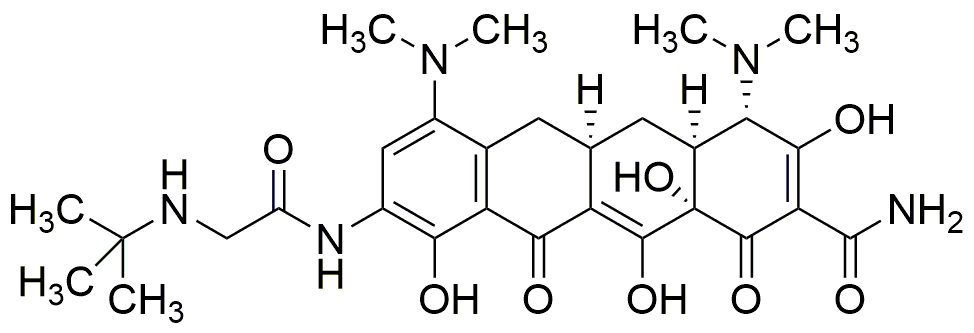Tigecycline is widely utilized in research focused on:
- Antibiotic Therapy: Primarily used to treat complicated skin and soft tissue infections, as well as intra-abdominal infections, providing an effective alternative for patients resistant to other antibiotics.
- Broad-Spectrum Activity: Its unique mechanism allows it to combat a wide range of Gram-positive and Gram-negative bacteria, making it a valuable option in hospitals facing multi-drug resistant strains.
- Research on Resistance Mechanisms: Utilized in microbiological studies to understand bacterial resistance, helping researchers develop new strategies to combat antibiotic resistance.
- Veterinary Medicine: Employed in treating infections in animals, particularly in livestock, ensuring animal health and productivity while addressing public health concerns related to antibiotic use.
- Formulation Development: Its properties are explored in pharmaceutical research to create new formulations that enhance drug delivery and efficacy, benefiting both patients and healthcare providers.
General Information
Properties
Safety and Regulations
Applications
Tigecycline is widely utilized in research focused on:
- Antibiotic Therapy: Primarily used to treat complicated skin and soft tissue infections, as well as intra-abdominal infections, providing an effective alternative for patients resistant to other antibiotics.
- Broad-Spectrum Activity: Its unique mechanism allows it to combat a wide range of Gram-positive and Gram-negative bacteria, making it a valuable option in hospitals facing multi-drug resistant strains.
- Research on Resistance Mechanisms: Utilized in microbiological studies to understand bacterial resistance, helping researchers develop new strategies to combat antibiotic resistance.
- Veterinary Medicine: Employed in treating infections in animals, particularly in livestock, ensuring animal health and productivity while addressing public health concerns related to antibiotic use.
- Formulation Development: Its properties are explored in pharmaceutical research to create new formulations that enhance drug delivery and efficacy, benefiting both patients and healthcare providers.
Documents
Safety Data Sheets (SDS)
The SDS provides comprehensive safety information on handling, storage, and disposal of the product.
Product Specification (PS)
The PS provides a comprehensive breakdown of the product’s properties, including chemical composition, physical state, purity, and storage requirements. It also details acceptable quality ranges and the product's intended applications.
Certificates of Analysis (COA)
Search for Certificates of Analysis (COA) by entering the products Lot Number. Lot and Batch Numbers can be found on a product’s label following the words ‘Lot’ or ‘Batch’.
Numéro de catalogue
Numéro de lot/série
Certificates Of Origin (COO)
This COO confirms the country where the product was manufactured, and also details the materials and components used in it and whether it is derived from natural, synthetic, or other specific sources. This certificate may be required for customs, trade, and regulatory compliance.
Numéro de catalogue
Numéro de lot/série
Safety Data Sheets (SDS)
The SDS provides comprehensive safety information on handling, storage, and disposal of the product.
DownloadProduct Specification (PS)
The PS provides a comprehensive breakdown of the product’s properties, including chemical composition, physical state, purity, and storage requirements. It also details acceptable quality ranges and the product's intended applications.
DownloadCertificates of Analysis (COA)
Search for Certificates of Analysis (COA) by entering the products Lot Number. Lot and Batch Numbers can be found on a product’s label following the words ‘Lot’ or ‘Batch’.
Numéro de catalogue
Numéro de lot/série
Certificates Of Origin (COO)
This COO confirms the country where the product was manufactured, and also details the materials and components used in it and whether it is derived from natural, synthetic, or other specific sources. This certificate may be required for customs, trade, and regulatory compliance.

